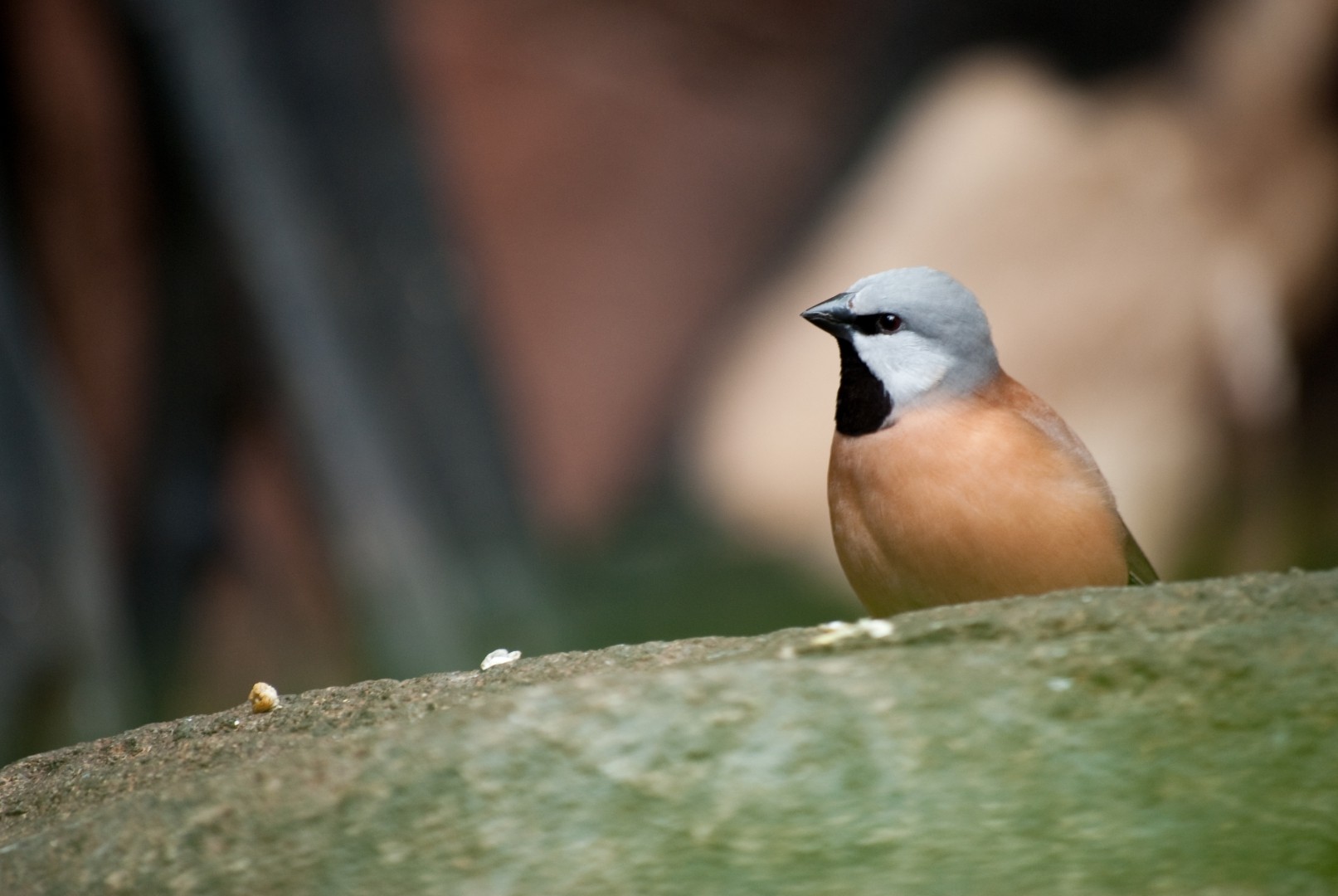Black-throated Finch
A species of Black-throated Finches Scientific name : Poephila cincta Genus : Black-throated Finches
Black-throated Finch, A species of Black-throated Finches
Botanical name: Poephila cincta
Genus: Black-throated Finches
Content
Description General Info
Description
Measuring around 10 cm (4 in) in length, the black-throated finch has a short black bill, lores, and throat, sharply delineated from the rest of the pale grey head. The wings, breast and belly are pale pinkish brown, and the short tail is black, while the rump is black in northern forms and white in southern. The vocalisation of P. cincta is comparable to that of the sister species Poephila acuticauda, although lower in tone and slightly less simple in the harmonic structures. Up to twelve calls have been identified, and the structure and tone of these is also distinguishable by subspecies. 
Size
11 cm
Life Expectancy
6-8 years
Nest Placement
Tree
Feeding Habits
Black-throated Finch primarily consume seeds such as Setaria sugens and Digitaria ciliaris, as well as termites. They forage on the ground, displaying a preference for grass seeds and occasional insects, revealing an opportunistic and varied diet.
Habitat
Black-throated Finch predominantly resides in open woodlands that have a grass and shrub understory, often found near watercourses. The species is also known to inhabit cultivated fields with a spread of individual trees. It favors grassy woodlands primarily composed of eucalyptus, paperbarks, or acacias. Additionally, black-throated Finch is adapted to life in savannas, which are largely dominated by eucalypts and paperbarks.
Dite type
Granivorous
General Info
Feeding Habits
Bird food type
Behavior
The black-throated finch is found in flocks of up to 30 birds. The behaviour is similar to that of the longtail Poephila acuticauda, close pair bonds that are isolated or associating in loose groups of six or more pairs. They forage in a range that centres on the nest site, which is used for breeding or for roosting outside of the maternity season. Local and seasonal conditions may cause to pairs to join congregations at limited resources, food and especially water, and they may join large flocks to travel to water sources during drought. 
Distribution Area
The black-throated finch was traditionally found from Cape York south through eastern Queensland and into north-eastern New South Wales in the vicinity of Tenterfield, however it has not been recorded in New South Wales since 1994. It is sedentary or locally nomadic. It is found in grassy open forested habitats, generally near bodies of water, such as rivers. 
Species Status
For the past few decades, the population of this species has declined. While the northern subspecies (black-rumped, Poephila cincta atropygialis) has a status of "Least concern" under Queensland's Nature Conservation Act 1992, the Commonwealth status of the southern subspecies (Poephila cincta cincta) under the Environment Protection and Biodiversity Conservation Act 1999 is "Endangered". The reason for the decline in population is probably due to the spread of pastoralism, changes in fire regime, and increases in the density of native woody weeds in grassy savannahs. A national management plan was published in 2004 by the New South Wales and Queensland governments, but records of the population density in the southern areas of its range showed declines in observed numbers from moderately common or abundant, to assessments as locally extinct or very rare by 2012. 
Scientific Classification
Phylum
Chordates Class
Birds Order
Perching birds Family
Estrildid finches Genus
Black-throated Finches Species
Black-throated Finch 